What is the Ratio Bloom Phase?
One of the tricky things about brewing fresh coffee is that when water comes into contact with the grounds they let out a bunch of trapped gasses, mostly in the form of carbon dioxide. If not properly accounted for, these gasses can have a pretty big impact on the resulting brew. Luckily, your Ratio handles this for you, whether you knew it or not.
The term used to describe this reaction between grounds and water is “bloom,” and it’s no coincidence that all Ratios have a bloom phase of their brewing process. To illustrate why this is so valuable, you can simply compare what it’s like to brew coffee with and without a bloom. To give you a good view of what’s going on, try simply brewing two batches of pour overs in the Ratio glass carafe.

As we you pour water onto the grounds you can immediately see the bubbles appear and watch the level of the grounds rapidly rise. To incorporate the bloom stage, we’ll simply add a small portion of the water and then wait for just over 30 seconds to allow things to settle down, which is precisely what your Ratio does for you automatically. With the non-bloom batch, simply keep pouring. As you near the end of the brewing process you'll see that, even accounting for the extra 30 seconds on the bloom side, the non-bloom batch finishes much more quickly. That’s our biggest hint as to why there’s an issue.
The reason this release of CO2 is problematic may not be immediately apparent, but it all comes down to how we extract flavor out of coffee. When we pour water over coffee grounds it soaks into them slowly but surely pulls all the different flavor compounds out of the coffee. In order to get good results it’s important to make sure that this happens relatively uniformly for the entire bed of grounds – this is, for instance, part of why the Ratio’s wide shower screen is so useful. The trouble occurs when that released CO2 starts forming bubbles and cavities within the bed of grounds.

Instead of the water uniformly flowing through and between all those little bits, it gets diverted by those bubbles and cavities. That means there are large areas where the grounds aren’t having all their flavor extracted. This doesn’t just mean weaker coffee, it can also mean coffee that tastes more sour, salty, or simply muddied.
With the Ratio, you get all the benefits of a bloom without having to wait around for that CO2 to settle down. This is part of what makes the Ratio more similar to a pour over than it is to traditional coffee makers. It’s genuinely simulating what you’d do by hand, and giving you the flavor benefits as well.
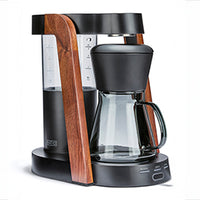 Ratio Eight S2
Ratio Eight S2
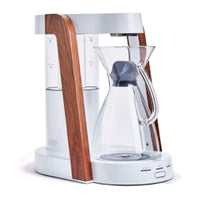 Ratio Eight Original
Ratio Eight Original
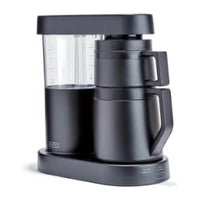 Ratio Six
Ratio Six
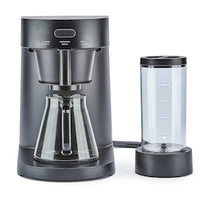 Ratio Four
Ratio Four
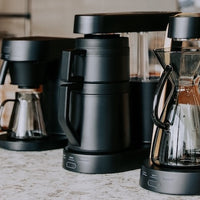 Compare Machines
Compare Machines






